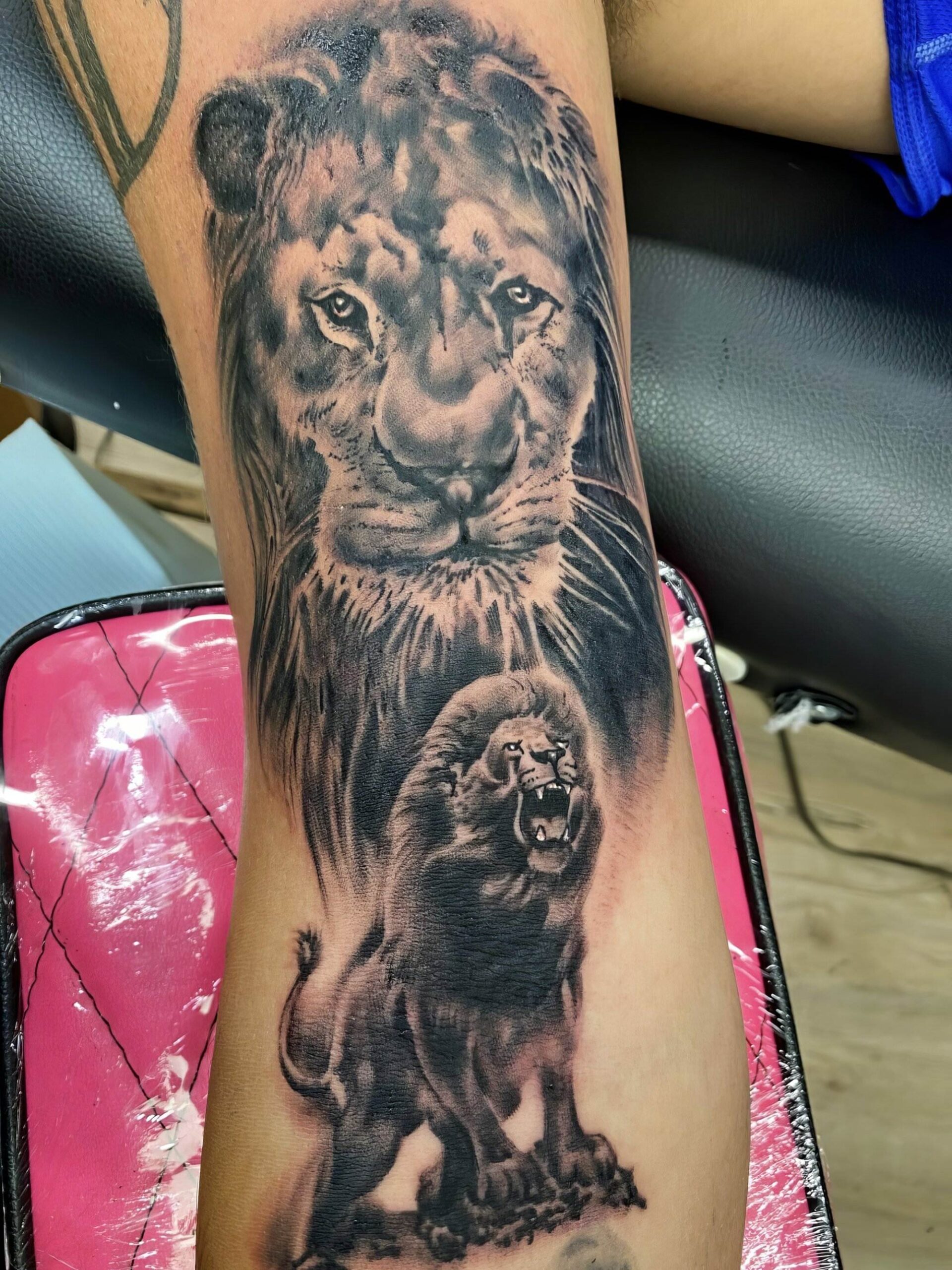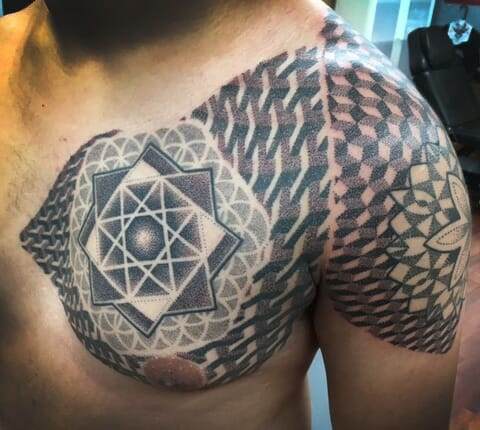
Introduction to Tattoo Aftercare Myths

Common Misconceptions
Tattoos have become incredibly popular in modern culture, yet many people still harbor misconceptions about their care post-application. With so much information available online, it can be challenging to discern fact from fiction. Common myths include ideas such as always covering a tattoo with petroleum jelly, keeping the tattoo covered at all times, or mistakenly believing that alcohol can aid in the healing process. These misconceptions can lead to improper care, resulting in faded or infected tattoos. Many individuals may think that their tattoo artist has offered them all the necessary information, neglecting the need for further education on aftercare.
Importance of Proper Aftercare
Proper aftercare is crucial for ensuring that a tattoo heals optimally and remains vibrant for years to come. Aftercare includes simple practices that can prevent infection and promote the body’s natural healing process. Consider the following benefits of adhering to a proper aftercare routine:
- Preventing Infection: A clean environment reduces the risk of bacteria entering the skin.
- Maintaining Design Integrity: Proper moisture and care can help prevent scabbing and fading, keeping the tattoo’s details crisp.
- Promoting Comfort: Taking the right steps makes the healing process more comfortable, reducing irritation and itching.
Understanding and implementing appropriate aftercare is essential for anyone looking to preserve the beauty and longevity of their tattoos.
Myth 1: You Should Use Petroleum Jelly on a New Tattoo

Potential Risks
One prevalent misconception in the world of tattoo aftercare is the belief that petroleum jelly should be slathered on a new tattoo. While it may seem like a quick-fix solution due to its moisturizing properties, this myth can lead to several complications. Using petroleum jelly can create a suffocating barrier over the healing skin. This can trap bacteria and moisture, increasing the risk of infection. Moreover, its greasy consistency can impede the skin’s natural healing process, leading to issues like excessive scabbing or delayed recovery. Consider these potential risks:
- Increased Infection Risk: Trapped bacteria can flourish in a moist environment, leading to irritation or infection.
- Poor Healing: The skin may not breathe properly, hindering the body’s natural regeneration processes.
Recommended Products for Aftercare
Instead of petroleum jelly, it’s advisable to opt for products specifically formulated for tattoo aftercare. These alternatives offer appropriate moisture and protection without the risks associated with petroleum-based products. Here are some recommended options:
- Tattoo-specific ointments: These products are designed to soothe and protect the skin without blocking air circulation. Look for brands that contain natural ingredients.
- Unscented lotions: A simple, hypoallergenic lotion can help keep the skin moisturized without irritation.
- Coconut oil: This natural moisturizer has antimicrobial properties, making it a great option for aftercare.
By choosing the right products for tattoo aftercare, individuals can promote healing while preserving the artwork on their skin effectively.
Myth 2: Tattoos Should Always Be Covered with Bandages

Risks of Over-Bandaging
Another common myth regarding tattoo aftercare is the notion that a new tattoo should always be covered with bandages. While it is essential to cover the tattoo immediately after the procedure to protect it from dirt and bacteria, over-bandaging can lead to several complications. Many people mistakenly believe that keeping the bandage on for extended periods will provide additional protection; however, this can introduce various issues.
- Moisture Build-Up: An unventilated environment can cause excessive moisture, which may lead to bacterial growth, increasing the risk of infection.
- Skin Irritation: Prolonged contact with adhesive materials can irritate the skin, resulting in rashes or allergic reactions.
- Impaired Healing: The skin needs to breathe to heal correctly. Keeping it covered too long can slow down the healing process.
Proper Healing Environment
To foster an ideal environment for a tattoo to heal, it’s crucial to strike a balance between protection and exposure. After the initial covering is removed—as recommended by your tattoo artist—allow the tattoo to breathe and air dry. Consider these practices for creating a proper healing environment:
- Keep it Clean: Regularly wash the tattoo with mild soap and pat it dry with a clean towel.
- Use a breathable bandage: If you feel the need for extra protection initially, opt for a breathable bandage that allows air circulation.
- Moisturize: Apply appropriate aftercare products as the tattoo heals, which will help keep the skin hydrated without sealing it completely.
These practices will help ensure that the tattoo heals effectively while minimizing the risk of complications associated with over-bandaging.
Myth 3: Applying Alcohol Can Speed Up Healing Process
Dangers of Alcohol on Tattoos
A prevalent myth in tattoo aftercare is that applying alcohol to a fresh tattoo can expedite the healing process. While it might be tempting to think about alcohol as a disinfectant, this approach can actually be detrimental to healing skin. Using alcohol may seem appealing due to its antiseptic properties; however, it poses several risks:
- Drying Effects: Alcohol can strip away essential moisture from the skin, leading to excessive dryness and irritation, which can ultimately worsen the appearance of the tattoo.
- Painful Stinging: Application of alcohol can create a painful sensation on a sensitive area of skin that is in the early stages of healing.
- Increased Infection Risk: By damaging the skin barrier, alcohol can actually make the area more susceptible to bacteria, countering the very purpose of its use.
Suitable Alternatives for Cleaning
Instead of reaching for alcohol, there are far better alternatives for cleaning and caring for a new tattoo. Here are some recommended options:
- Mild Soap: Gently wash the tattoo using a fragrance-free, antibacterial soap and lukewarm water. This helps remove bacteria and keeps the area clean without irritation.
- Saline Solution: A saline solution can be used as an effective way to clean and soothe a tattoo without the harsh impacts of alcohol.
- Tattoo Aftercare Products: Many products are specifically designed for tattoo aftercare, containing natural ingredients that promote healing and hydration.
By steering clear of alcohol and opting for gentler alternatives, individuals can support their tattoo’s healing process effectively and ensure their new art looks stunning for years to come.
Myth 4: Sunscreen is Not Necessary for Tattoo Protection
Importance of Sun Protection
A widespread misconception is that tattoos remain unaffected by sun exposure, leading many to forgo sunscreen altogether. In reality, protecting tattoos from the sun is crucial for maintaining their vibrancy and preventing long-term damage. Exposure to UV rays can lead to fading and discoloration, turning once-vibrant colors into dull shades. Furthermore, without proper protection, the skin can become damaged, affecting the tattoo’s overall appearance. Consider these key reasons for applying sunscreen to your tattoo:
- Color Preservation: Sunscreen helps maintain the vibrancy of the colors and details in your tattoo, ensuring it looks as fresh as the day it was inked.
- Skin Health: Protecting your skin from UV rays reduces the risk of sunburn and potential skin cancer, prioritizing your overall well-being.
Best Practices for Sunscreen Application
To provide optimal protection for your tattoos, follow these best practices when applying sunscreen:
- Use Broad Spectrum SPF: Choose a broad-spectrum sunscreen with at least SPF 30 to shield against both UVA and UVB rays.
- Apply Generously: Apply a generous amount of sunscreen to the tattooed area 15-30 minutes before sun exposure.
- Reapply Regularly: If swimming or sweating, reapply sunscreen every two hours, or more frequently as recommended.
By making sunscreen application a part of the aftercare routine, individuals can ensure their tattoos remain breathtaking, vibrant, and protected for years to come, embracing the beauty of their body art without compromising skin health.
Myth 5: It’s Fine to Swim or Soak in Water Immediately After Getting Tattooed

Risks of Water Exposure
One of the most dangerous myths surrounding tattoo aftercare is the belief that it’s safe to swim or soak in water right after getting tattooed. While jumping into a pool or hot tub may seem appealing, this practice can have severe implications for the healing process. Fresh tattoos are essentially open wounds and are highly susceptible to bacteria and irritation. Consider the following risks associated with water exposure:
- Increased Infection Risk: Pools and hot tubs can harbor harmful bacteria that may lead to infections in an unhealed tattoo.
- Color Bleeding and Fading: Prolonged exposure to water can cause the ink to bleed or fade, diminishing the design quality over time.
- Irritation and Excess Moisture: Soaking can lead to excess moisture buildup, resulting in irritation, longer healing times, and undesirable complications.
Proper Care for Fresh Tattoos
To ensure a healthy healing process for new tattoos, follow these appropriate care guidelines:
- Avoid Water Activities: Refrain from swimming, soaking in bathtubs, or using saunas for at least two weeks post-tattoo.
- Gentle Cleaning: Instead of soaking, gently wash the tattoo with mild soap and pat it dry with a clean towel.
- Moisturize: Apply recommended aftercare products regularly to keep the tattoo hydrated and protected without saturating it in water.
By adhering to these practices, individuals can significantly improve their tattoo’s healing process and maintain its beauty, free from complications arising from premature exposure to water.
Conclusion: Debunking Tattoo Aftercare Myths
In navigating the world of tattoos, it’s essential to separate fact from fiction, especially regarding aftercare. The various myths surrounding tattoo care can lead to misunderstandings and potentially harm the beautiful art that adorns your skin. Through our exploration of common misconceptions—including the use of petroleum jelly, the need for constant bandaging, and the supposed benefits of alcohol—it’s clear that proper tattoo aftercare is paramount. Awareness of these myths not only empowers tattoo recipients but also promotes a healthier healing process. Here’s a brief recap of the essential truths we’ve discussed:
- Avoid petroleum jelly in favor of tattoo-specific aftercare products.
- Limit bandaging to initial coverage, allowing the tattoo to breathe and heal properly.
- Refrain from using alcohol; it disrupts moisture balance and can worsen the healing process.
- Sunscreen is crucial for protecting vibrant colors from fading in the sun.
- Steer clear of water exposure during the initial healing phase to prevent infection and complications.
By following accurate aftercare practices, individuals can ensure their tattoos remain stunning and represent the intended artistry for many years. Embracing informed choices transforms the tattoo experience into one of celebration and care, allowing skin art to flourish beautifully.






